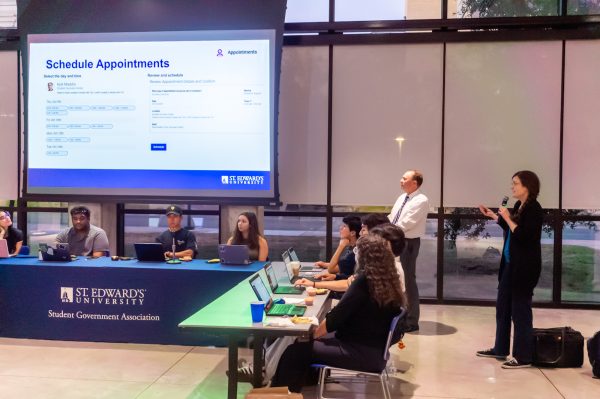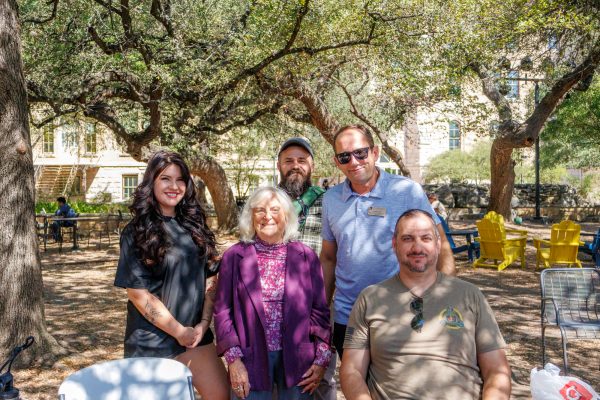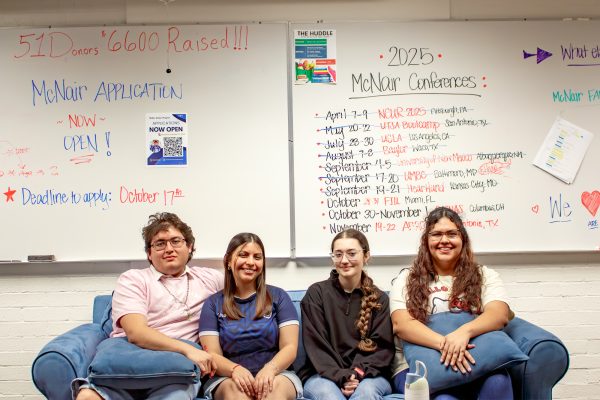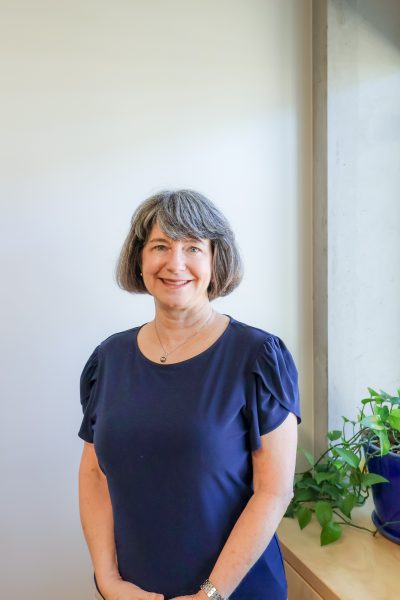Police unit specializes in tracking and preventing gang activity
Bridget Carter, a senior at St. Edward’s University, was recently granted access through a student media pass to ride along in an Austin Police Department (APD) patrol car. Carter reports on the all-night patrol.
It was just before midnight on a Thursday and Scott Arthurs and I were sitting in his patrol car across from a vacant trailer. Arthurs, who has been on the Austin police force for 18 months, offered to show me a gang-graffiti hot spot on the 800 block of Kramer Lane and Lamar Boulevard.
This was no “Keep Austin Weird” graffiti art mural — this was a territorial statement. Every inch of the trailer was tagged with gang acronyms and symbols: NSB for North Side Bloods, BGK for Blood Gangsta Killas and 973. Gangs use numbers that correspond to the letters of the alphabet. 973 corresponds to IGC, which further decrypts to Infamous Gangsta Crips or Insane Gangsta Crips. The devil’s fork — when facing up is Crips and facing down is Bloods — was also present on the dilapidated trailer. An easy way to remember this symbol is that blood runs down.
“I’ll come over here every once and a while and take pictures of this graffiti and send it to the gang unit,” Arthurs said.
This routine is part of Arthurs’ typical nightly patrol shift.
The APD currently has 12 detectives and two sergeants working the Gang Suppression Unit. A database is utilized to document and track gang members in Austin.
“The state of Texas mandates that you have to satisfy at least two criteria out of a list of 10 that would qualify someone to be listed in the database,” APD officer Brian Jones said. Jones has been a police officer for 16 years and was a gang unit detective for eight years.
Criteria for documenting gang members in the database include tattoos commonly affiliated with gangs, color of clothing, affiliating with a documented gang member or self-admission.
“I’ve had that happen to me a lot where they will openly admit that they are affiliated with a gang,” Jones said. “They’re proud. They’re not thinking that they will be added to a database.”
The presence of gang activity in Austin contrasts with the city’s reputation as a laid-back college town. Gang activity in Austin is that of street gangs such as Bloods, Crips and Los Cholos. These gangs typically commit crimes such as auto thefts, robberies, assaults, home invasions and drug deals. Violence is not generally inflicted on random civilians; it is usually between rival gangs.
“Home invasions are not random,” Jones said. “Bloods usually know when Crips are dealing, and because of that they know they’ve got a lot of money. Home invasions are all about dope.”
In 2003, 19 members of the Texas Syndicate gang were arrested in Austin under the Racketeer Influenced Corrupt Organizations, RICO, Act. This act was established in the 1970s to combat the Italian Mafia problem. It serves to take down a whole organization and its leader. Even if the leader never committed the crimes personally, he is considered part of the criminal enterprise.
“Austin is headquarters for the Texas Syndicate, so that [RICO case] cut the head off the snake,” Jones said. “We decimated the leadership.”
Gang activity can be found in areas with low-income housing, or project-based rental assistance programs. Most notorious areas of Austin with gang-affiliated crimes are North Austin around Powell, Lamar and Rundberg; and South East Austin, such as Dove Springs.
Gang members tend to stay in areas they are used to, Jones said.
When a gang leader named Capone crept out of his comfort zone, the unit was able to capture him, Jones said.
Capone was the leader of the Texas Syndicate in the early 2000s Capone was introduced to someone dealing drugs on the University of Texas campus and went to a couple of college parties with the dealer to supply cocaine. The Gang Suppression Unit finally arrested Capone using a Title III wiretap.
“Capone told us how nervous he was at this party. He didn’t know how to act,” Jones said. “He’d be talking to these college girls, and he’d be nervous.”





